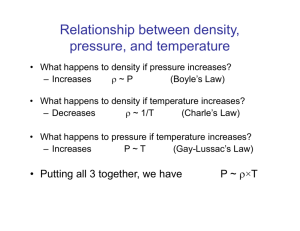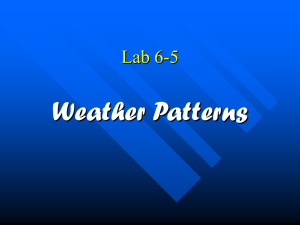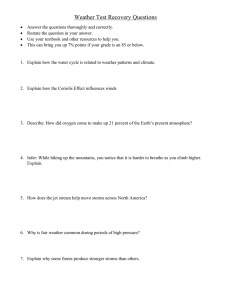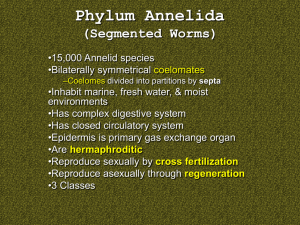Presentation
advertisement
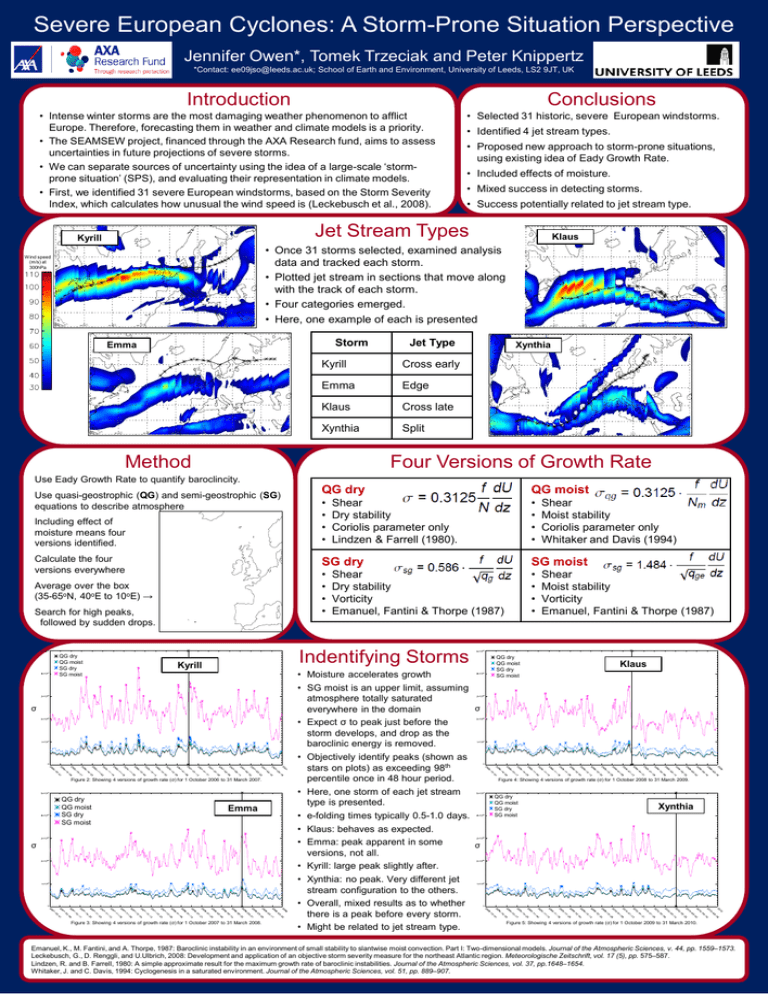
Severe European Cyclones: A Storm-Prone Situation Perspective Jennifer Owen*, Tomek Trzeciak and Peter Knippertz *Contact: ee09jso@leeds.ac.uk; School of Earth and Environment, University of Leeds, LS2 9JT, UK Introduction Conclusions • Intense winter storms are the most damaging weather phenomenon to afflict Europe. Therefore, forecasting them in weather and climate models is a priority. • The SEAMSEW project, financed through the AXA Research fund, aims to assess uncertainties in future projections of severe storms. • We can separate sources of uncertainty using the idea of a large-scale ‘stormprone situation’ (SPS), and evaluating their representation in climate models. • First, we identified 31 severe European windstorms, based on the Storm Severity Index, which calculates how unusual the wind speed is (Leckebusch et al., 2008). • Selected 31 historic, severe European windstorms. • Identified 4 jet stream types. • Proposed new approach to storm-prone situations, using existing idea of Eady Growth Rate. • Included effects of moisture. • Mixed success in detecting storms. • Success potentially related to jet stream type. Jet Stream Types Kyrill Klaus • Once 31 storms selected, examined analysis data and tracked each storm. • Plotted jet stream in sections that move along with the track of each storm. • Four categories emerged. • Here, one example of each is presented Wind speed (m/s) at 300hPa Storm Emma Jet Type Kyrill Cross early Emma Edge Klaus Cross late Xynthia Split Method Xynthia Four Versions of Growth Rate Use Eady Growth Rate to quantify baroclincity. Use quasi-geostrophic (QG) and semi-geostrophic (SG) equations to describe atmosphere Including effect of moisture means four versions identified. Calculate the four versions everywhere Average over the box (35-65oN, 40oE to 10oE) → Search for high peaks, followed by sudden drops. QG dry QG moist SG dry SG moist QG moist • • • • • • • • Shear Dry stability Coriolis parameter only Lindzen & Farrell (1980). Figure 2: Showing 4 versions of growth rate (σ) for 1 October 2006 to 31 March 2007. Emma σ Figure 3: Showing 4 versions of growth rate (σ) for 1 October 2007 to 31 March 2008. Shear Moist stability Coriolis parameter only Whitaker and Davis (1994) SG dry SG moist • • • • • • • • Shear Dry stability Vorticity Emanuel, Fantini & Thorpe (1987) Indentifying Storms Kyrill σ QG dry QG moist SG dry SG moist QG dry • Moisture accelerates growth • SG moist is an upper limit, assuming atmosphere totally saturated σ everywhere in the domain • Expect σ to peak just before the storm develops, and drop as the baroclinic energy is removed. • Objectively identify peaks (shown as stars on plots) as exceeding 98th percentile once in 48 hour period. • Here, one storm of each jet stream type is presented. • e-folding times typically 0.5-1.0 days. • Klaus: behaves as expected. • Emma: peak apparent in some σ versions, not all. Storm-Prone Situations • Kyrill: large peak slightly after. • Xynthia: no peak. Very different jet stream configuration to the others. • Overall, mixed results as to whether there is a peak before every storm. • Might be related to jet stream type. QG dry QG moist SG dry SG moist Shear Moist stability Vorticity Emanuel, Fantini & Thorpe (1987) Klaus Figure 4: Showing 4 versions of growth rate (σ) for 1 October 2008 to 31 March 2009. QG dry QG moist SG dry SG moist Xynthia Figure 5: Showing 4 versions of growth rate (σ) for 1 October 2009 to 31 March 2010. Emanuel, K., M. Fantini, and A. Thorpe, 1987: Baroclinic instability in an environment of small stability to slantwise moist convection. Part I: Two-dimensional models. Journal of the Atmospheric Sciences, v. 44, pp. 1559–1573. Leckebusch, G., D. Renggli, and U.Ulbrich, 2008: Development and application of an objective storm severity measure for the northeast Atlantic region. Meteorologische Zeitschrift, vol. 17 (5), pp. 575–587. Lindzen, R. and B. Farrell, 1980: A simple approximate result for the maximum growth rate of baroclinic instabilities. Journal of the Atmospheric Sciences, vol. 37, pp.1648–1654. Whitaker, J. and C. Davis, 1994: Cyclogenesis in a saturated environment. Journal of the Atmospheric Sciences, vol. 51, pp. 889–907.


